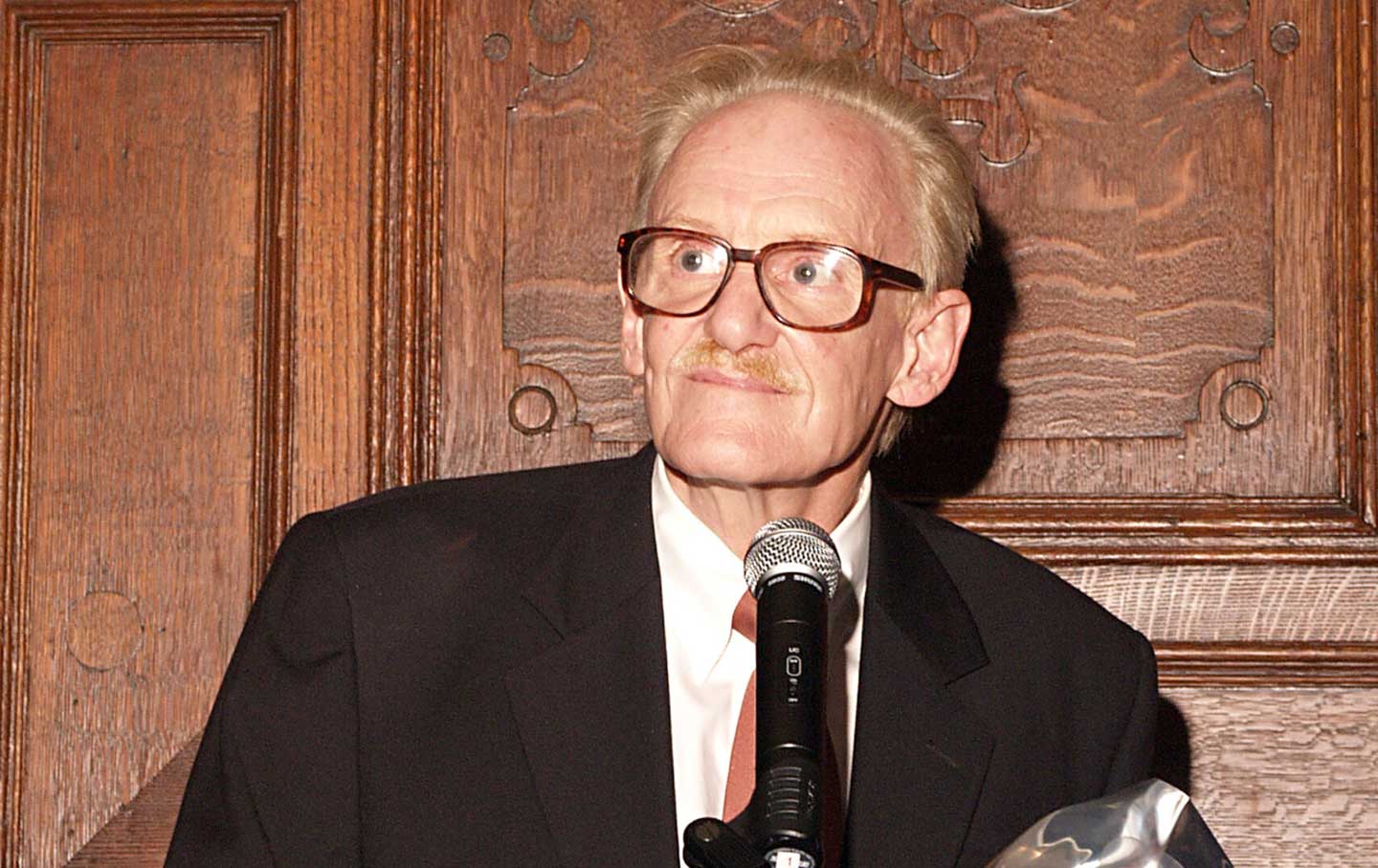
Peter Schjeldahl, 2008.(Jonathan Ziegler / Getty)
We were stuck in traffic on the way to Alex Katz’s opening at the Guggenheim when my wife started riffling through her phone. “Does Peter Schjeldahl have a new book out?” She asked. “His picture is all over Instagram.” My heart sank. No, I knew there was no new book. I knew all those pictures were saying goodbye.
Since before I ever set foot in a gallery, Schjeldahl was one of New York’s leading art critics—in recent years for The New Yorker, but before then for The New York Times, the short-lived weekly Seven Days, and, most notably, The Village Voice. At a time when art criticism was becoming more and more scholastic in tone, Schjeldahl proudly upheld the banner of belletristic criticism in the tradition of Charles Baudelaire, Guillaume Apollinaire, and the various New York poets—John Ashbery, Frank O’Hara—who wrote for Art News in its heyday in the 1950s and ’60s. And as I honed my own critical skills, I constantly turned to his writing, arguing with it, emulating some aspects of it while trying hard not to emulate others.
Schjeldahl’s stylistic elan was more than just decorative and charming—it was an intellectual scalpel that could, oh so delicately, reveal the difficulties of feeling that give art its life. Schjeldahl was a hedonist who understood that pleasure in art could only ever be pleasure troubled. A recent article of his was on Mondrian—an artist whom one would have thought too austere to ignite Schjeldahl’s aesthetic imagination. But Schjeldahl delighted in the “obdurate mystery” of the Dutchman’s art—“his powerful combinations of hermetic sensibility and formal clarity, which dumbfound even as they command attention.” For Schjeldahl, the experience of art was inseparable from a willingness to be dumbfounded, to be reduced to not knowing, to just experiencing.
Schjeldahl was catholic in his interests but could be strangely reticent about his own preferences. “There’s art I adore that I won’t write about,” he once explained, “because I can’t imagine it mattering enough to general readers. It pertains to my private experience as a person, without which my activity as a critic would wither but which falls outside my critical mandate.” That’s a point where I found myself in fundamental disagreement with him: For my taste, he gave too much weight to the public consensus-building aspect of the critic’s role, and not enough to the personal and idiosyncratic.
Schjeldahl was avidly read by those who could empathize with his hyperalert sensibility and appreciate the insights it enabled—that “Holbein was sensitive but cautiously unerotic in picturing women, who are usually sombre,” or that “It’s like [Jasper] Johns to daintily invoke holy rage.” He wasn’t satisfied to retail the bromides that accumulate around famous art. But neither was he eager to put himself in the spotlight. He did eventually overcame his aversion to the first-person singular in 2019 with “The Art of Dying.” The essay was a kind of valedictory occasioned by the diagnosis that he laid out flatly in its opening line: “Lung cancer, rampant.” Part of its subject was precisely his long-standing inability to write autobiography—his feeling of being at once insufficiently interesting as a subject and too guilt-ridden for self-revelation. The complexity of Schleldahl’s character suddenly came into focus.
At the time, “The Art of Dying” seemed to serve as Schjeldahl’s leave-taking, but it turned out to be the preface to a renewal of his energies. Since that essay (and contrary to the prognosis he shared with me in an e-mail a couple of months before the essay appeared: “Prospect about half a year”), he came to seem more alive than he had ever been, becoming even more productive and turning out, by my count, some forty-five more articles for The New Yorker between February 2020, when he wrote about the painter Peter Saul, and this October, with a piece on the photographs of Wolfgang Tillmans—and all in a period of pandemic that was making so many of us less active. Each time a new Schjeldahl essay dropped, a kind of cheer went up among his readers, a cheer for life, for enthusiasm, for art—for anything that kept going into extra innings. Schjeldahl may no longer be with us, but for his readers his essays will continue to do that. That why he was all over Instagram that day. We wanted him to go on forever.
Barry SchwabskyBarry Schwabsky is the art critic of The Nation.